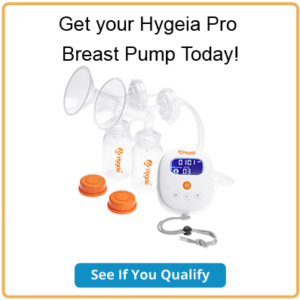Who knew? A few years ago we could only dream of a federal law that would provide break time for breastfeeding or breast milk feeding mothers to pump or express at work. And then to have that followed by an IRS reversal to allow use of health savings account plans or medical tax deductions to include breast pumps and supplies.
This is now a reality for the legions of nursing mothers returning to work outside the home. There are some limitations: because of how the law was passed last March, as an amendment under the Patient Protection and Affordable Care Act, it applies only to employees who are covered by the Fair Labor Standards Act, which means hourly workers and not salaried workers. However, it is still a quantum leap for mothers and babies!
But saying it and doing it are two separate things. Many employers and their human resource departments have yet to comply with the new regulations, either because it has not presented, or a mother has not exercised her right to implement the new law.
That’s why was I delighted to read a piece by Alexis Grant of U.S. News & World Report’s Money section on “What Women Should Know About Breastfeeding at Work” published just a few weeks ago. It was later featured in the Chicago Tribune as “Balancing breastfeeding, career.” Grant did her homework and presents the following helpful tips for mothers who plan on pumping at work:
Check your state law first. Some states provide greater protection for breastfeeding mothers, such as requiring companies to offer break time beyond one year after the child’s birth. Those greater protections override the federal law.
Ask while you’re pregnant, not when you return from maternity leave. This gives your employer time to figure out the best way to accommodate you, says Kirsten Berggren of WorkAndPump.com. That works out for both parties; your boss won’t be pressed for time, and you’ll have what you need when you return to work.
Write an e-mail before discussing it in person. Cathy Carothers, president of the International Lactation Consultant Association, who helps businesses create breastfeeding-friendly environments, says employers often appreciate a written request from an employee before talking about her needs during a face-to-face meeting. That prevents catching the boss off-guard, which is particularly helpful when the boss or employee might be uncomfortable with the topic.
Ask nicely rather than demanding your rights. “Employers don’t like people threatening them with the law,” Carothers says. “So I’d encouraged the mother not to say, ‘It’s the law, you have to do this for me.’” Instead, try something like, “I’d like to talk to you about some ways to work together to make this work,” she says. “That approach gets women much farther.”
Consider the greater good. You’re not the only woman who needs to pump at work, so remember that making the request might help others, too. “Each time that somebody asks, we’re opening the door for even more moms and more children to be able to do the same thing,” says Rowe-Finkbeiner of MomsRising.
Explain how your ability to breastfeed could benefit the business. Show your boss what the company gains from making it feasible for you to pump during the day. Supporters of the nursing-at-work law say it decreases the company’s healthcare costs and cuts down on mothers’ sick days because breastfed babies tend to be healthier than bottle-fed infants. It can also improve employee loyalty and decrease turnover because workers appreciate being able to balance their work responsibilities with family life.
Show that you’re flexible. If your employer is concerned about decreased productivity, offer to come in early or stay late to make up the time, Carothers says. Make it clear that this will help you continue to be a great employee.
If need be, reference the law. If you’ve tried the strategies above and your employer won’t budge, maybe it’s time to mention the law. Make sure you understand how it applies to you so you can accurately explain your right to pump at work.
Don’t forget to claim your tax break. Breast pumps qualify as a healthcare expense, the Internal Revenue Service ruled recently. That means you can use pre-tax money from your flexible health spending account to cover your pump and supplies.
Of all of these tips, I most like the suggestion to start while you are pregnant. This replaces the stress of approaching your supervisor, HR or employer while still home with your baby and gives them time to make adjustments for your return. Those of us who counsel breastfeeding mothers know the challenges you face in finding childcare, freezing milk for future use and the logistics of planning all mothers share!
Another valuable article is “12 Tips for Mothers preparing to Go Back to Work” from Bravodesigns.com. This straightforward list of tips focuses on mother’s prep work at home. My favorite:
Remain positive about what you are able to give to your baby: Returning to work and leaving your baby either at home with a caregiver or in a daycare can be trying to a new mom. Give yourself the time and space to adjust to this learning curve. Breastfeeding (and pumping) can—unfortunately—become the “dumping ground” for all the mixed emotions women experience when they return to work. View your pumping times as a time where you can visualize your baby and “re-connect,” while providing him with sustenance. Bringing milk home in the afternoons or evenings should be a source of tremendous pride for you, and more evidence that you are willing to work to continue to keep this strong bond you have created with your little one.
Take a look at these links and pass them along to mothers you know who are transitioning to the workplace. Mother’s milk is her healthy departure gift to her baby. Making that easier is a gift to her!

